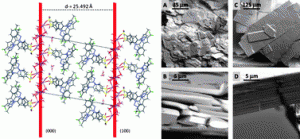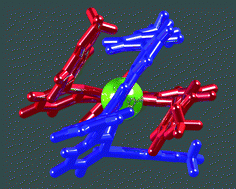The marketed crystalline form of the painkiller celecoxib (Cel-III), COX-2 selective anti-inflammatory drug, has poor solubility. Various strategies to improve this and increase its bioavailability have been published including the use of crystalline forms of the sodium salt. This study by Julius Remenar and colleagues in the USA describes the structural findings and insights that have resulted from their effort to harness and understand the sodium salts of Celecoxib. Find out more in this CrystEngComm ‘Hot Article’.
 Celecoxib sodium salt: engineering crystal forms for performance
Celecoxib sodium salt: engineering crystal forms for performance
Julius F. Remenar, Mark D. Tawa, Matthew L. Peterson, Örn Almarsson, Magali B. Hickey and Bruce M. Foxman
CrystEngComm, 2011, Advance Article
DOI: 10.1039/C0CE00475H, Paper
READ FOR FREE! Until November 18th.













 The role of chemical interactions and epitaxy during nucleation of organic crystals on crystalline substrates
The role of chemical interactions and epitaxy during nucleation of organic crystals on crystalline substrates